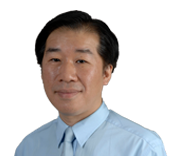After brain cancer and leukemia, the third-leading cause of cancer mortality in children is a type of bone cancer called osteosarcoma. Most people diagnosed with osteosarcoma are under age 25.
To understand more about how osteosarcoma develops, a researcher at The University of Texas Health Science Center at Houston is studying how the disease begins in children with a genetic predisposition to osteosarcoma because of an inherited condition called Li-Fraumeni syndrome.
Cancer biologist Dung-Fang Lee was recruited to UT Health in 2016 from Icahn School of Medicine at Mount Sinai with the help of a First-Time Tenure-Track Award from CPRIT. Lee is a graduate of The UT Graduate School of Biomedical Sciences at Houston, where he received his Ph.D.
Read More
After brain cancer and leukemia, the third-leading cause of cancer mortality in children is a type of bone cancer called osteosarcoma. Most people diagnosed with osteosarcoma are under age 25.
To understand more about how osteosarcoma develops, a researcher at The University of Texas Health Science Center at Houston is studying how the disease begins in children with a genetic predisposition to osteosarcoma because of an inherited condition called Li-Fraumeni syndrome.
Cancer biologist Dung-Fang Lee was recruited to UT Health in 2016 from Icahn School of Medicine at Mount Sinai with the help of a First-Time Tenure-Track Award from CPRIT. Lee is a graduate of The UT Graduate School of Biomedical Sciences at Houston, where he received his Ph.D.
Children born with Li-Fraumeni syndrome, a rare hereditary disorder, carry a mutation in a tumor-suppressor gene called p53. The p53 mutation alone is not enough to cause cancer, but acquiring one or several subsequent mutations can cause cancers to develop in their bones, breasts, or blood. These children are prone to developing osteosarcoma between ages 10 and 20.
Lee is trying to understand how the p53 mutation leads to cancer. To study this, he uses cells, called induced pluripotent stem cells, generated from fibroblasts from the skin of Li-Fraumeni patients. These cells have the capacity to differentiate into many different types of cells, and Lee can coerce them into developing into osteoblasts, which is the type of cell that osteosarcoma originates from.
Using these cells, Lee creates patient-matched cell lines that he can use as models to study the subsequent mutations that lead to osteosarcoma. So far he’s identified over thirty different mutations, either over-expression of a cancer-initiation gene or loss of a tumor-suppression gene, that can lead to cancer. He hasn’t categorized these mutations yet, but hopes to determine which mutations are crucial for osteosarcoma development.
Mutations in the initial p53 tumor suppression gene can’t be corrected in Li-Fraumeni patients, because the mutation exists in a patient’s every cell. But Lee hopes that by finding the most important subsequent mutations, it might eventually be possible to prevent osteosarcoma from developing using targeted chemotherapy.
A mutation in the p53 gene is also common in many other types of cancer. But as in osteosarcoma, a mutation in that gene is never enough to cause cancer on its own. Lee hopes his findings in Li-Fraumeni patients can be more generally applied to other cancer types.
He’s also studying two other hereditary conditions that lead children to develop osteosarcoma. One is a hereditary form of retinoblastoma, a cancer of the eyes. These patients not only develop eye cancer but also are prone to developing osteosarcoma. Second is a hereditary condition called Rothmund-Thomson syndrome, which predisposes children to develop osteosarcoma at a very young age, usually under 10 years of age. “These genetic diseases carry different mutations, but in the end, all of the patients develop osteosarcoma,” Lee says. “We are trying to figure out the common mechanism by which they develop this disease.”
Lee credits CPRIT funding for enabling him to follow ideas that wouldn’t typically be funded by other agencies. “I believe ‘crazy’ ideas are of significant benefit to science, even though they’re not typically funded by agencies like the National Institutes of Health,” he says. “Without ‘crazy’ ideas, we can’t make significant scientific advances.”
Lee studied chemical engineering and radiobiology at National Tsing Hua University in Taiwan, where he received his bachelor’s and master’s degrees. He first came to the U.S. as a graduate student at UT in 2002. He began his postdoctoral fellowship at Mt. Sinai in 2008.
Read Less

